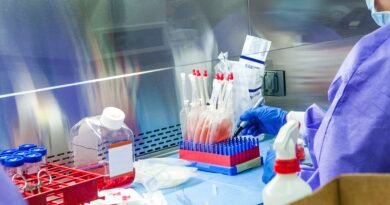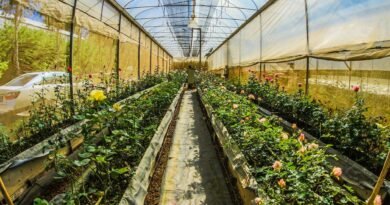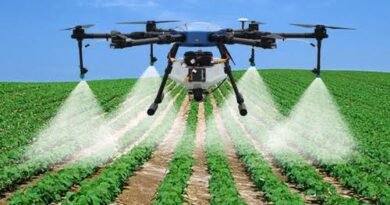Precision Farming : The future of agriculture

Precision farming, also known as precision agriculture, is an approach to agriculture that uses advanced technology and data analysis techniques to optimize crop production and minimize waste. Precision farming techniques enable farmers to make more informed decisions about planting, fertilizing, irrigating, and harvesting crops, based on data gathered from sensors, satellites, and other sources.
Precision farming involves the use of various technologies, such as global positioning systems (GPS), geographic information systems (GIS), drones, and sensors, to collect data about soil conditions, weather patterns, crop growth, and other factors that affect crop production. This data is then analyzed using advanced software and algorithms to generate insights that can help farmers make more precise decisions about how to manage their fields.
Some of the benefits of precision farming include increased crop yields, reduced waste, lower costs, and improved environmental sustainability. By using data-driven insights to optimize their operations, farmers can reduce the amount of water, fertilizer, and pesticides they use, which can in turn help to reduce their environmental impact.
Overall, precision farming is a promising approach to agriculture that has the potential to revolutionize the way we grow food and manage our natural resources.
Precision farming involves several key components, including:
- Remote Sensing and Mapping: Remote sensing technologies such as satellite imagery, drones, and aerial photography are used to collect data about agricultural land, including soil moisture, plant health, temperature, and other variables. This data is then processed and analyzed to create detailed maps of the field.
- Global Positioning System (GPS): GPS technology is used to precisely locate the equipment used in farming activities such as planting, fertilizing, and harvesting. This helps farmers to apply inputs more accurately and efficiently.
- Geographic Information System (GIS): GIS is used to integrate and analyze data from different sources, including remote sensing, GPS, and weather stations. GIS helps farmers to make better decisions about crop management and optimization.
- Variable Rate Technology (VRT): VRT involves the use of technology to apply inputs such as fertilizers, pesticides, and irrigation water at variable rates across the field based on data collected from remote sensing and mapping.
- Automated machinery: Automated machinery such as tractors, planters, and harvesters equipped with GPS and VRT technologies are used to optimize farming operations, reduce labor costs and improve efficiency.
- Data Analytics: Data analytics is used to analyze the data collected from various precision farming technologies and generate insights that can help farmers make more informed decisions about crop management.
Overall, precision farming involves the integration of advanced technologies and data analysis techniques to optimize farming operations, improve yields, reduce waste, and improve the sustainability of agriculture.
Precision farming has several benefits, including:
- Improved crop yields: Precision farming techniques allow farmers to optimize crop growth by using data-driven insights to make more informed decisions about planting, fertilizing, and irrigating crops. This leads to increased yields and higher profits.
- Reduced costs: Precision farming technologies help farmers to reduce costs by using inputs such as fertilizers, pesticides, and water more efficiently, and by reducing labor costs through automation.
- Reduced environmental impact: Precision farming helps to reduce the environmental impact of agriculture by reducing the use of inputs such as fertilizers and pesticides, which can lead to improved soil health and water quality.
- Increased efficiency: Precision farming technologies such as automated machinery and GPS allow farmers to work more efficiently, reducing the time and labor required for farming operations.
- Improved decision-making: Precision farming provides farmers with detailed data and insights that can help them make more informed decisions about crop management, improving the overall productivity of the farm.
- Better crop quality: By using precision farming techniques to optimize crop growth, farmers can produce higher-quality crops that meet the specific needs of buyers and consumers.
The future of precision farming looks promising, with continued advancements in technology and data analytics expected to revolutionize the agricultural industry. Here are some of the key trends that are shaping the future of precision farming:
- Artificial Intelligence (AI): AI is expected to play a significant role in the future of precision farming, with machine learning algorithms being used to analyze large amounts of data collected from remote sensing technologies, drones, and other sources. This will enable farmers to make more informed decisions about crop management and optimization.
- Big Data Analytics: The use of big data analytics is expected to increase, with the integration of data from multiple sources, including weather data, soil data, and crop yield data, providing farmers with a more comprehensive view of their fields.
- Autonomous Machinery: Autonomous machinery equipped with advanced sensing and navigation technologies is expected to become more common, reducing the need for human labor and improving the efficiency of farming operations.
- Precision Livestock Farming: Precision farming is no longer limited to crop production, with precision livestock farming becoming an increasingly important area of focus. This involves using technology to monitor the health, well-being, and productivity of livestock, with data being used to optimize feed and healthcare management.
- Blockchain Technology: Blockchain technology is expected to be increasingly used to track the supply chain of agricultural products, providing transparency and accountability to consumers and buyers.
Overall, the future of precision farming looks bright, with continued advancements in technology expected to improve the efficiency, productivity, and sustainability of agriculture.



